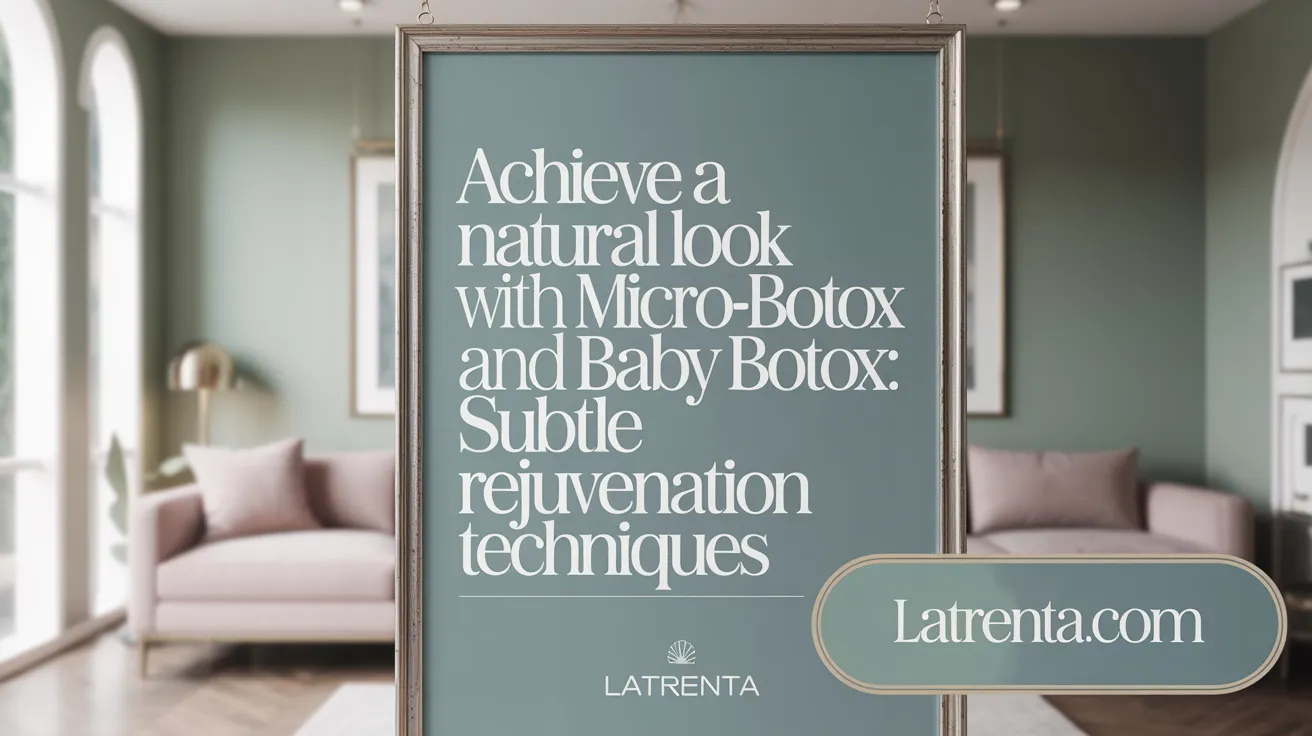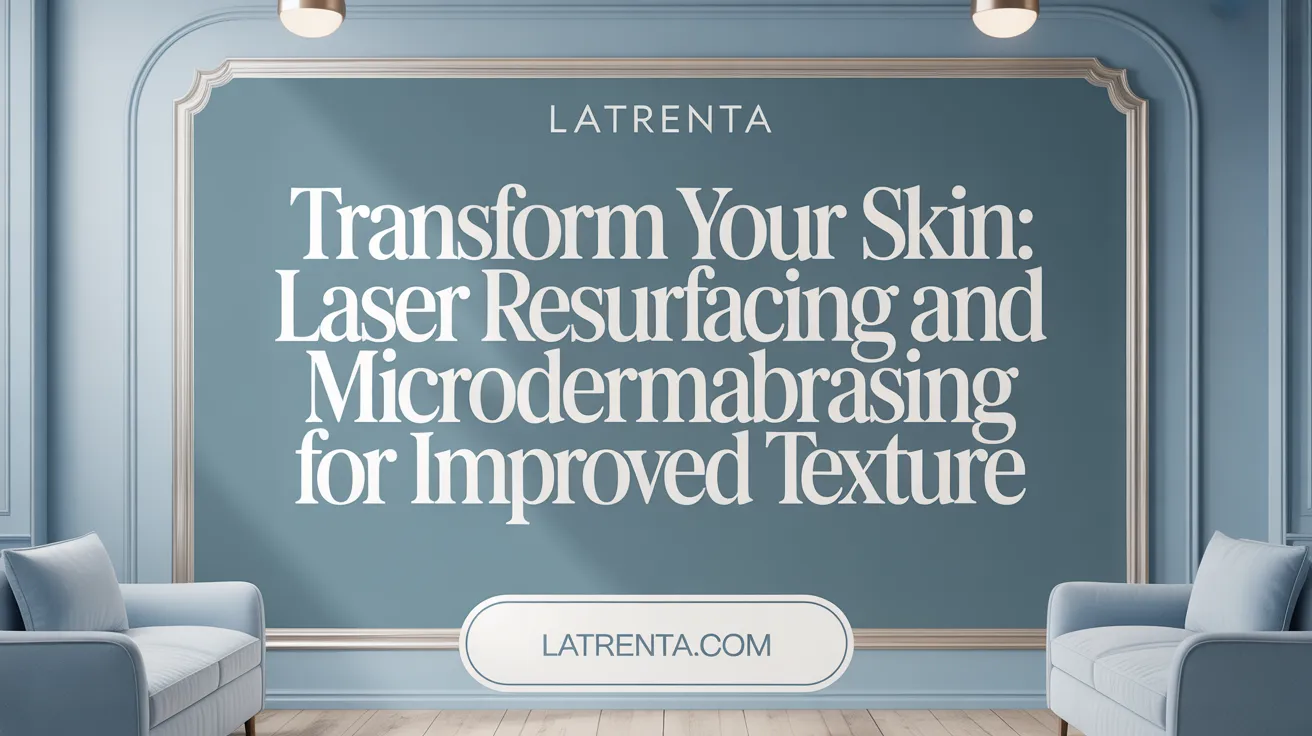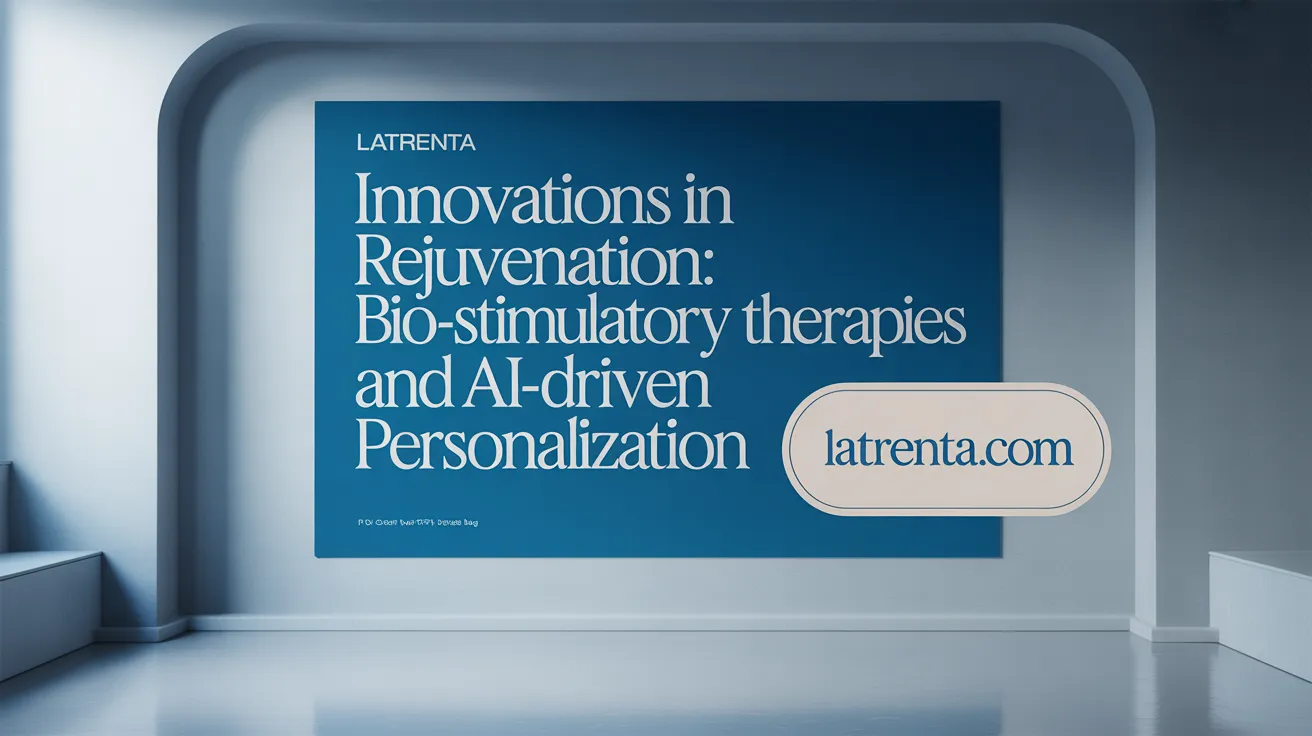Embracing Subtle Facial Rejuvenation Without Surgery
In today’s aesthetic landscape, non-surgical facial rejuvenation offers transformative results with minimal downtime, appealing to those seeking natural, understated enhancements. From neuromodulators like Botox to advanced laser therapies, these treatments target wrinkles, volume loss, and skin texture to restore youthful radiance. This guide explores the top non-surgical cosmetic treatments, highlighting their mechanisms, benefits, and the latest innovations that define subtle rejuvenation in 2024.
Key Facts on Non-Surgical Facial Rejuvenation Techniques
- Non-surgical treatments like Botox and Dysport relax overactive muscles causing dynamic wrinkles.
- Micro-Botox and Baby Botox are innovations that offer subtle, natural-looking rejuvenation by injecting smaller toxin amounts.
- Dermal fillers such as Hyaluronic acid, Sculptra, and Radiesse restore volume and smooth wrinkles with effects lasting from 6 months to 2 years.
- Laser skin resurfacing, including ablative and non-ablative types, improves skin texture, tone, and tightness with varying recovery times.
- Non-invasive skin tightening methods like Ultherapy and Radiofrequency treatments stimulate collagen production for firmer, lifted skin.
- Emerging innovations include exosomes, PRP, AI-driven facial mapping, and long-lasting neuromodulators and fillers to enhance natural results.
- Combining modalities such as injectables, laser, and regenerative therapies can optimize overall facial rejuvenation.
- Treatments are personalized based on skin type, age, and specific aging signs to ensure safety and efficacy.
- Goals of subtle rejuvenation focus on softening lines, restoring volume, and improving skin quality for a natural, refreshed appearance.
- Results are gradual, harmonious, and maintain facial expression, emphasizing natural beauty with regular follow-up to preserve outcomes.
1. Botox and Neuromodulators: Smoothing Dynamic Wrinkles for a Refreshed Appearance

What are the different types of non-surgical cosmetic treatments available for subtle facial rejuvenation?
In the realm of non-invasive beauty enhancement, Botox and Dysport are among the most popular options. These neuromodulators are injectable treatments derived from botulinum toxin, used primarily to relax overactive facial muscles.
They work by temporarily weakening muscles responsible for dynamic wrinkles—those lines that form from repeated facial expressions. Common areas treated include forehead lines, crow's feet around the eyes, and frown lines between the eyebrows.
The effects typically last about three to six months, making them a convenient choice for those seeking subtle improvements without surgery. Patients enjoy quick procedures with minimal discomfort, and results can be seen within days.
Current innovations in Botox techniques include Micro-Botox and Baby Botox. Micro-Botox involves injecting smaller amounts of toxin into facial muscles to smooth skin and reduce pore size, leading to a softer, more natural look. Baby Botox, on the other hand, uses smaller doses to maintain facial expressions while subtly erasing fine lines, catering to individuals who desire a more natural rejuvenation.
These treatments are safe and effective when administered by trained professionals, especially board-certified dermatologists or plastic surgeons, who understand facial anatomy and can customize treatments for optimal, natural-looking results.
For those interested, searching for “Botox and Dysport uses in facial rejuvenation” or exploring “advanced Botox techniques 2024” can provide deeper insights into the latest innovations in this field.
2. Dermal Fillers: Restoring Volume and Contours for Natural Facial Enhancement

What are the different types of dermal fillers used in facial rejuvenation?
In 2024, several types of dermal fillers are popular for restoring facial volume and smoothing wrinkles. Hyaluronic acid-based fillers, such as Juvederm and Restylane, are among the most widely used due to their natural moisture-retaining properties and reversibility. These fillers can effectively plump lips, lift cheeks, and diminish nasolabial folds.
In addition, collagen-stimulating agents like Sculptra and Radiesse are utilized to promote the body’s own collagen production, providing longer-lasting results and improving skin elasticity.
Poly-L-lactic acid (PLLA) fillers like Sculptra are especially valued for their ability to gradually rebuild volume over several months, offering a more natural and subtle enhancement.
How do fillers restore volume and smooth wrinkles?
Fillers work by being injected into specific areas beneath the skin. They fill in lost volume, smooth out folds, and lift sagging areas. For example, placing hyaluronic acid fillers in the cheeks creates a youthful contour and reduces the appearance of hollowing.
They also help soften lines around the mouth and nose, while lip fillers enhance shape and fullness. The volume restoration results in a more refreshed, natural appearance, often immediate after treatment.
What about longevity and reversibility?
Results from hyaluronic acid fillers typically last between 6 to 12 months, depending on the formulation and treatment area. Collagen-stimulating fillers like Sculptra may last longer, up to 2 years.
Reversibility is an important aspect—hyaluronic acid fillers can be dissolved quickly using hyaluronidase if needed, offering safety and flexibility.
How can fillers be combined with other treatments?
For a comprehensive facial rejuvenation, dermal fillers are often combined with neuromodulators such as Botox to address both static and dynamic wrinkles. This combination allows for subtle, natural-looking results that preserve facial expressions while reducing signs of aging.
In some cases, fillers are used alongside laser treatments, chemical peels, or microneedling to enhance overall skin quality and contour while addressing specific concerns.
| Fillers Type | Primary Use | Duration | Reversibility | Additional Benefits |
|---|---|---|---|---|
| Hyaluronic Acid | Volume, lip enhancement, fine lines | 6-12 months | Yes | Hydrates skin, natural look |
| Sculptra | Collagen stimulation, subtle lift | Up to 2 years | No | Gradual, long-lasting improvement |
| Radiesse | Cheek volume, contouring, deep folds | 12-18 months | No | Stimulates own collagen |
This versatile array of dermal fillers provides personalized options for natural facial enhancement, making them essential tools in modern non-surgical facial rejuvenation.
3. Laser Therapies and Skin Resurfacing: Enhancing Texture and Tone with Precision

What non-surgical methods are effective for skin tightening and skin resurfacing?
Laser skin resurfacing is one of the most effective non-surgical options for improving skin texture and tone. It utilizes controlled light energy to stimulate collagen production and encourage the growth of new, healthier skin.
There are two main types of laser treatments: ablative and non-ablative. Ablative lasers, such as CO2 lasers, remove the outermost layer of damaged skin, resulting in significant improvements in wrinkles, scars, and pigmentation. These treatments require longer recovery periods but provide dramatic results.
Non-ablative lasers, on the other hand, heat the deeper layers of the skin without removing the surface. They promote collagen remodeling gradually, offering improvements with minimal downtime. Examples include fractionated laser systems like Fraxel, which target specific skin areas safely and effectively.
To further enhance skin rejuvenation, treatments like chemical peels and microdermabrasion are often combined with laser therapies. Chemical peels use acids like glycolic, salicylic, or TCA to exfoliate damaged outer layers and stimulate cellular turnover. Microdermabrasion mechanically exfoliates the skin with tiny crystals, creating smoother, brighter skin without significant recovery time.
These procedures are designed not only to tighten loose skin but also to address a variety of aging signs, including pigmented spots, scars, and uneven skin tone. They are safe when performed under the supervision of trained professionals, such as board-certified dermatologists or experienced aestheticians.
In conclusion, laser therapies along with complementary treatments offer a comprehensive approach to facial rejuvenation. They are customizable based on skin type, concern severity, and desired outcomes, making them popular choices for those seeking subtle to significant skin improvements without surgery.
4. Non-Surgical Skin Tightening: Lifting and Firming Without Incisions

What are the main differences between minimally invasive and non-invasive facial rejuvenation treatments?
Non-invasive skin tightening treatments focus on using technology such as ultrasound skin tightening and radiofrequency skin tightening energy to stimulate natural collagen production, leading to firmer, more lifted skin without any incisions or injections. These therapies are ideal for individuals with mild to moderate skin laxity seeking subtle improvements with little to no downtime.
In contrast, minimally invasive procedures, such as injectables (Botox, fillers) or thread lifts, involve penetrating the skin or underlying tissues to target specific issues more precisely. While they can provide more dramatic results, they typically include a small degree of tissue penetration and may require some recovery time.
Ultrasound treatments like Ultherapy
Ultherapy is a popular non-invasive ultrasound treatment that delivers focused energy deep into the skin layers. It stimulates collagen production gradually, resulting in gradually lifting and tightening the skin, especially around the brow, jawline, and neck. Most patients notice subtle improvements within a few months, with effects lasting about a year.
Radiofrequency procedures like Thermage and Morpheus8
Radiofrequency (RF) treatments, such as Thermage and Morpheus8, use heat energy to tighten skin by stimulating collagen synthesis. Thermage is often used for the face, eyes, and neck and provides noticeable skin tightening with minimal discomfort. Morpheus8 combines RF with microneedling, delivering thermal energy through tiny needles, enhancing skin texture and firmness while promoting collagen.
Combination therapies using IPL and RF
For greater efficacy, practitioners often combine RF with IPL or other modalities to address multiple skin concerns, including uneven tone and texture. These combination therapies can enhance collagen stimulation, improve skin tone, and provide a more comprehensive facial rejuvenation.
Candidates and effectiveness for mild to moderate sagging
These non-surgical skin tightening options are well-suited for those experiencing early signs of aging, such as mild to moderate skin laxity, loose jawlines, and dull-looking skin. They are less effective on severe sagging, which might require surgical intervention. Proper candidate assessment by a qualified professional ensures optimal results.
Duration and natural results
Results from non-invasive skin tightening treatments tend to develop gradually over several months as collagen regenerates. While some treatments offer short-term benefits lasting up to a year, repeated sessions can sustain or enhance results. The improvements are typically subtle and natural-looking, maintaining the individual's facial expressions without the stiff or frozen appearance often associated with more invasive procedures, similar to Botox and filler results.
5. Emerging Technologies: The Future of Natural-Looking Facial Rejuvenation
 Facial rejuvenation in 2024 is experiencing a transformation driven by innovative technologies and evolving treatment philosophies. One major focus is on bio-stimulatory therapies such as exosomes and platelet-rich plasma (PRP). Exosomes, which contain growth factors and proteins, are used to promote cellular regeneration and enhance skin texture, offering a natural avenue for skin renewal.
Facial rejuvenation in 2024 is experiencing a transformation driven by innovative technologies and evolving treatment philosophies. One major focus is on bio-stimulatory therapies such as exosomes and platelet-rich plasma (PRP). Exosomes, which contain growth factors and proteins, are used to promote cellular regeneration and enhance skin texture, offering a natural avenue for skin renewal.
PRP therapy, utilizing the patient’s own blood components, continues to grow in popularity due to its ability to stimulate collagen growth and tissue repair, resulting in subtle, natural enhancements without artificial fillers (PRP therapy for collagen renewal, Platelet-rich plasma (PRP) efficacy).
Advancements in AI-assisted treatment planning are also paving the way for highly personalized procedures. Facial mapping technology helps practitioners analyze individual facial anatomy with precision, enabling tailored and more subtle rejuvenation results, matching each person’s unique features (AI-assisted facial mapping).
Another trend is the development of long-lasting neuromodulators and collagen-stimulating fillers. These products aim to extend treatment durability, reducing the frequency of repeat procedures while maintaining natural, harmonious appearances (Longer-lasting dermal filler results, Collagen-stimulating fillers Sculptra and Radiesse).
Combining different modalities—such as injectables, laser, and regenerative therapies—is becoming commonplace. This approach enhances overall results, addressing multiple signs of aging simultaneously for balanced outcomes (Combination treatments for facial rejuvenation, Injectable treatments and laser therapies).
Finally, there is a growing emphasis on sustainability and holistic wellness. Practices incorporate eco-friendly materials, minimally invasive methods, and wellness strategies like nutrition and stress management to optimize skin health (Sustainable practices in plastic surgery).
Overall, the future of facial rejuvenation lies in bioactive, personalized, and sustainable treatments that promote a natural, youthful look while respecting each individual’s unique facial harmony.
Understanding the Benefits and Mechanisms of Key Non-Invasive Procedures
Non-invasive facial rejuvenation techniques such as Botox, dermal fillers, and laser therapies provide a range of advantages, including minimal downtime, reduced risks compared to surgical procedures, and results that enhance natural beauty gradually. Botox, derived from botulinum toxin, works by temporarily relaxing the facial muscles responsible for dynamic wrinkles like crow’s feet and frown lines, leading to smoother skin in treated areas. Dermal fillers, often made from hyaluronic acid, restore lost volume, soften lines, and enhance facial contours such as cheeks and lips, helping achieve a more youthful appearance.
Laser treatments stimulate collagen production, improving skin texture, reducing pigment irregularities, and tightening the skin. They can address issues like scars, age spots, and vascular blemishes, with the choice of laser type (ablative or non-ablative) depending on skin condition and desired results.
Safety considerations are paramount: these procedures should be performed by qualified, board-certified professionals who can customize treatments based on individual skin types and goals. Proper administration minimizes side effects such as bruising, swelling, or redness, and helps ensure outcomes are both natural and effective.
Overall, when administered carefully by experienced clinicians, these non-invasive options offer effective, subtle improvements in facial appearance, making them increasingly popular choices for those seeking youthful rejuvenation without surgery.
Tailoring Treatments to Skin Types and Aging Concerns
When it comes to non-surgical facial rejuvenation, personalization based on individual skin characteristics and aging patterns is crucial for optimal results.
Treatment options are carefully selected after evaluating skin tone, texture, and specific aging signs. For instance, lighter skin tones may tolerate more aggressive laser procedures, such as ablative CO2 lasers, which effectively address deep wrinkles and sun damage. Conversely, darker skin tones require gentler approaches—like non-ablative laser treatments or chemical peels—that minimize the risk of hyperpigmentation.
Different aging signs demand targeted therapies. Volume loss in the cheeks and under-eye areas is best treated with hyaluronic acid fillers or fat transfer methods, restoring youthful fullness. Fine lines and surface wrinkles are often smoothed with Botox or Dysport injections, which relax muscles dynamically causing wrinkles.
Combining multiple treatments—such as laser resurfacing with injectables and skin tightening—can provide comprehensive rejuvenation, addressing both surface and deeper structural concerns. This integrative approach underscores the importance of detailed consultations with experienced professionals who can craft individualized treatment plans.
Thorough assessment and expert guidance ensure safe, effective, and natural-looking outcomes, emphasizing a personalized journey toward youthful, healthy skin.
Goals and Outcomes of Subtle Facial Rejuvenation Without Surgery
What are the typical goals and expected outcomes of subtle facial rejuvenation without surgery?
The primary aim of subtle facial rejuvenation is to enhance a person’s natural appearance without making overt or dramatic changes. Treatments focus on softening fine lines and wrinkles, restoring lost facial volume, and improving overall skin quality, including tone and texture.
Patients often seek these procedures because they want to look refreshed and rested, not artificial or overdone. The goal is to achieve a harmonious balance where individual features are subtly enhanced, maintaining the person’s unique facial expression and personality.
Expected results include a more youthful, vibrant look with smoother skin, lifted contours, and improved skin elasticity. These effects are gradual and understated, helping the individual appear naturally rejuvenated rather than “done.” Such outcomes are achieved through injectables like Botox® and dermal fillers, laser therapy for skin improvement, and skin tightening treatments.
Since these procedures emphasize preservation of natural features, results are often subtle but impactful, boosting confidence and self-esteem.
Maintenance involves regular follow-up treatments such as repeat injections, laser sessions, or skincare routines to sustain the improvements. The longevity of these outcomes varies depending on the specific treatment—typically from several months to a couple of years—and is complemented by diligent skincare habits. You can view more about expected duration and maintenance of Botox and fillers and laser treatment benefits.
Overall, the goal is to achieve a fresher, more vibrant look that aligns with the person’s natural beauty, emphasizing subtlety and authenticity. For further insight on this approach, see the art of subtle facial rejuvenation.
Choosing the Right Path to Timeless Beauty
Non-surgical cosmetic treatments have revolutionized facial rejuvenation, blending science and artistry to offer subtle, natural improvements without the need for surgery. From the enduring popularity of Botox and dermal fillers to the precision of laser therapies and emerging regenerative technologies, individuals have diverse options tailored to their unique features and aging concerns. Understanding these treatments’ mechanisms, benefits, and advancements empowers patients to make informed decisions, guided by experienced professionals committed to safe, personalized care. Embracing non-invasive rejuvenation not only enhances appearance but also fosters self-confidence, proving that looking and feeling youthful can be accessible, elegant, and enduring.
